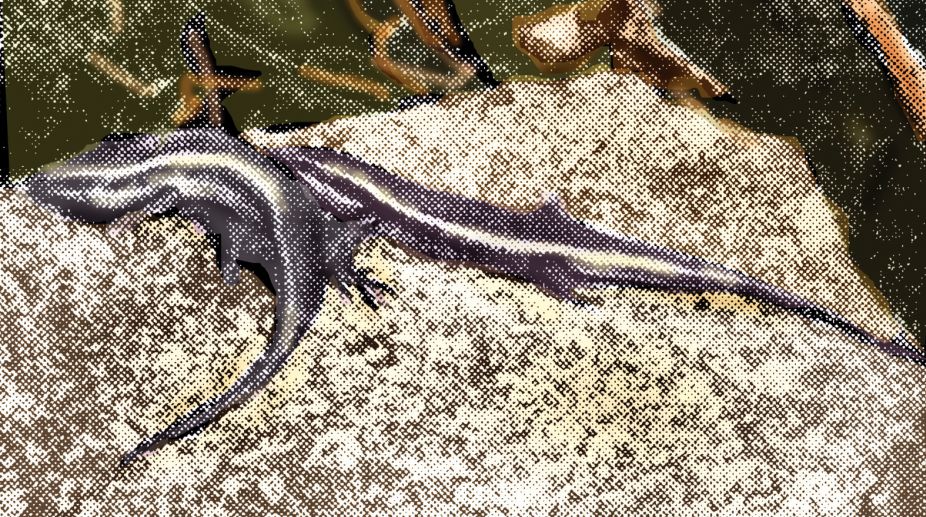Of the lizard family one may well say: “How are the mighty fallen!” Once prehistoric lizards dominated life on earth, but those great monsters and dragons died out long, long ago, and today the degenerate representatives of the family scuttle along walls and hedges, and hide in crevices in stone and bark. In fact, with the exception of the crocodiles and the alligators, none of them is really dangerous, or even frighteningly big.
All the same, they retain their primitive urges and passions, and are both violent and secretive in their ways. The life of most small lizards consists of hunting prey and escaping being killed, furtive solitude and sudden displays of intimidation. One would expect love to be a brief and somewhat violent urge with such creatures, and in many lizards love is like that.
Advertisement
Therefore it was a surprise and a revelation to me when I followed a pair of courting skinks for five days in my backyard some years ago, and noted that their intimacy was marked by a protracted courtship and many tender overtures that were ludicrously human at times.
They were the common skinks of our plains (Mabuiya carinata), and both were very big. The female, over 10 inches long, was darker, and had the dark chocolate “hyphen-marks” on the skin prominently displayed; but because it had a regenerating tail, was much less in length; it was markedly paler. Both skins had a faint mauve blush over the dominant olive green of the skin ~ I do not know if this blush signified breeding condition.
For the first two days, the pair would not allow a really close approach, but thereafter “accepted” me, and I was with the pair from morning till late in the evening each day, seldom further than two yards away, often much nearer.
I was using a folding camera with a proxar lens for close up pictures, and had to get the lens an estimated 18 inches from my subjects for the pictures. The pair kept close together, and except occasionally when hunting, were never more than 10 ft from each other.
At nightfall the skinks retired to a pile of stones, and disappeared down the many deep tunnels in the pile, and did not come out till the sun was up next morning.
It was during the early rains, in July-August, that I watched this pair, and at midday, if the sun was shining, they would bask in close proximity, bodies usually touching on a big slab of stone; if it rained, they found ample shelter under this same stone, which had a hollow space beneath it.
There were many other skinks in my backyard, all of them considerably smaller, and invariably they ran away from the vicinity of the courting couple. The male was gallant in its attitude to its mate, never disputing any prey, and allowing the female to take the cockroaches I offered occasionally.
Tactile stimuli and responses seemed to play an important part in the leisurely progress of the courtship. The male often snuggled up to the resting female, touching it with the body, sometimes caressing it with the snout.
On the fourth day they mated, and mated again twice. On the fifth day there was a sustained downpour and they disappeared from sight-in fact, I did not see them together again. I saw the female a week later, on the tiles of my bathroom in which it had, apparently, found a congenial home for the rains.
This was published on 7 August 1967











